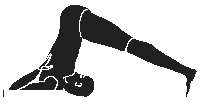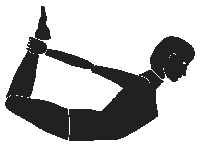Introduction

A certain amount of gas is present in your GI tract at any one time, mainly in your stomach and colon. The average person passes gas about 10 times each day and up to 20-25 times normally. More than that may be excessive. Many people believe that too much gas causes abdominal bloating. However, people who complain of bloating from gas often have normal amounts of gas. They actually may be unusually aware of gas in the digestive tract. A diet of fatty foods may delay stomach emptying and cause bloating and discomfort, but not necessarily too much gas. Certain conditions may cause bloating, such as irritable bowel syndrome, Crohn disease, or colon cancer. People with scar tissue from abdominal operations or internal hernias may have a sensation of bloating because of increased sensitivity to gas. Belching is a normal reflex which occurs most commonly after meals, releasing swallowed air. This is the release of gas from the stomach, either voluntary or involuntary. Belching can be associated with eating too quickly, fizzy drinks, chewing gum and smoking.
Yoga and Flatulence
Yoga is a way of life, an art of righteous living or an integrated system for the benefit of the body, mind and inner spirit. Performing regular yogic asanas and breathing exercises along with taking some natural and herbal medicines is the best way to free your life from the ailment of gastric problems. Regular focused breathing can open up blocked areas of energy in the body and thus strengthen the digestive system. Similarly, there are certain special morning kriyas of yoga which help in the strengthening of abdominal powers to prevent and treat indigestion and other stomach related disorders. Aim of Yoga is the attainment of the physical, mental and spiritual health. Certain yoga asana that are inverted are extremely beneficial for treating indigestion since they force your blood to flow in the opposite direction. This helps to take the strain off from your lower body and when you return to your normal position the blood rushes back, this helps to clear any blockages and also nourishes your system with a fresh supply of fresh blood and oxygen so your system rejuvenates itself and functions at its optimum level.YOGA POSES FOR FLATULENCE
Boat Pose
Perform the Boat Pose to strengthen your abdominal area and hip flexor, tone muscles in the midsection, improve digestion, and relieve stress. You can use a Yoga Strap to aid you in holding the pose longer or if you cannot keep your legs straight.Bow Pose
The alternating stretching and releasing of the abdominal muscles increases blood flow to this area and aids all sorts of digestive disorders and discomforts. The Bow works all parts of your back simultaneously. The pose is so named because as you hold it, your body is bent back like a bow and your arms are held straight and taut like a bowstring.Cobra Pose
This is simply the easiest of the yoga poses for anxiety. Lying flat on stomach rest your palms besides your shoulders. Holding the feet together and toes pointing away, push-up your head and chest gently off the ground with head lifted up fully. Breathing sequence is inhaling while pushing up and exhaling on the way back.Pigeon Pose
The Pigeon Pose isolates various muscles in the hips, reducing stiffness and increasing flexibility. It is this isolation of muscles that can make this pose so challenging. Be aware that there is definitely some physical work involved with the practice of this asana. The key is to bring your attention to and observe the sensations created in your body during your practice.Pranayama
Pranayama or Breathing Exercise which promotes proper breathing. In a Yogic point of view, proper breathing is to bring more oxygen to the blood and to the brain, and to control Prana or the vital life energy. Pranayama Yoga also goes hand in hand with the Asanas. The union of these two Yogic Principles is considered as the highest form of purification and self-discipline, covering both mind and body.YOGA ASANAS FOR FLATULENCE
PAVANMUKTASANA

Steps
- Lie down on your back, fold your right leg upto the knee and lift the right knee to the chest. Interlock both the hands and keeping them on knee support knee to rest on the chest. Then lift your head and try to touch the knees by your nose. Now hold your breath and remain in this position for 10-20 seconds and then make your leg straight.
- In second stage of Pavanmuktasanaboth knees should be folded in the same way and the head should be lifted to touch in between the knees by nose as shown in picture below. Duration and timing of PavanMuktasana
- The position of pawan muktasana should be holded for 10-20 seconds and the entire procedure should be repeated 2-4 times, then second phase of Pavanmuktasana should be done. Complete cycle should then be repeated 3-4 times.
HALASANA

Steps
- Lie flat on your back with legs and feet together, arms at the sides, closed and placed beside the thighs.
- Keeping your legs straight, inhale slowly, and raise your legs to 30, 60 and 90, pausing at each stage. While exhaling push your legs further over and above the head and then beyond, so that they touch the floor (without bending the knees).
- Stretch your legs as far as possible so that your chin presses tightly against the chest. Then raise your hands and try to hold the toes. Retain the pose from 10 seconds to three minutes. Breathe normally.
- While exhaling, return to the standing position. Slowly go through the process in the reverse order.
DHANURASANA

Steps
- Lie down with face and the forehead touching the ground, arms extended along side the body and legs straight.
- Bend your legs at the knees towards the hips, bringing them forward so that they can be held firmly by the hands at the ankles on the respective sides.
- While inhaling, stretch your legs backwards and raise your thighs, chest and head simultaneously. Hands should be kept straight. The weight of the body should be on the navel. Knees should be kept close, if possible, with eyes looking upwards. This posture should be retained for at least a few seconds, holding the breath.
BHUJANGASANA

Steps
- Lie in the prone position with the forehead resting on the floor, legs straight and feet together, toes pointing backwards, arms bent at the elbows, palms flat on the floor, shoulders and arms on the sides of the chest and fingers kept straight And together.
- Inhale slowly and the raise the upper body (head, neck and chest). Look at the ceiling (sky) with the neck bent as far back as possible. For raising the body, only the back muscles are to be used.
- Do not push up with your arms. Waist, legs and toes should remain on the ground. Raise your body as much as possible, holding the position and retaining the breath for a few seconds.
- Exhaling slowly, return to the original position. Repeat three to four times.
Diseases Related to Virgo |
||


